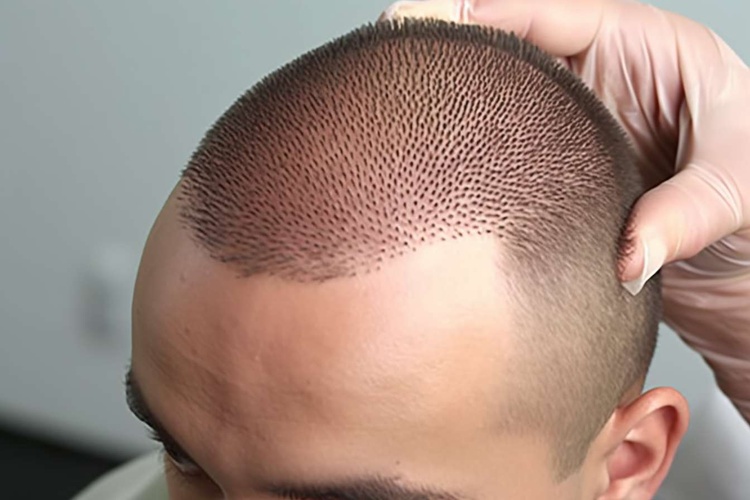Managing Scalp Psoriasis: Causes and Soothing Solutions
Struggling with constant itching, flaking, or thick patches on your scalp? It might be more than just dandruff. Scalp psoriasis is a common autoimmune condition that can cause discomfort, embarrassment, and even hair loss if left untreated. In this guide, we break down everything you need to know—from early symptoms and root causes to the most effective relief options available today. Whether you are newly diagnosed or looking for better ways to manage flare-ups, this is your roadmap to a healthier scalp.

What Does Scalp Psoriasis Look Like?
Scalp psoriasis typically appears as raised, reddish patches covered with silvery-white scales. These patches can vary in size, from small, localized areas to covering the entire scalp. In severe cases, the condition may extend beyond the hairline to the forehead, back of the neck, or behind the ears. The affected skin often becomes dry, cracked, and itchy, which can lead to flaking that resembles dandruff. However, unlike dandruff, scalp psoriasis patches are thicker and more clearly defined. In some instances, temporary hair loss may occur in areas where psoriasis is particularly severe, though the hair usually regrows once the condition is treated.
How Does Psoriasis Start on the Scalp?
The onset of scalp psoriasis is typically triggered by a combination of genetic predisposition and environmental factors. While the exact cause remains unknown, researchers believe that an overactive immune system plays a significant role. In individuals with psoriasis, the immune system mistakenly attacks healthy skin cells, accelerating the skin cell production process. This rapid turnover causes cells to build up on the surface of the scalp, forming the characteristic scaly patches.
Several factors can trigger or exacerbate scalp psoriasis:
-
Stress: High levels of stress can weaken the immune system and potentially trigger a psoriasis flare-up.
-
Infections: Certain infections, particularly streptococcal throat infections, may trigger psoriasis in susceptible individuals.
-
Skin injuries: Cuts, scrapes, or sunburns can lead to the development of psoriasis patches, a phenomenon known as the Koebner effect.
-
Climate: Cold, dry weather can worsen symptoms, while warm, humid conditions may provide some relief.
-
Certain medications: Some drugs, including lithium, beta-blockers, and antimalarial medications, may trigger or worsen psoriasis.
What Are the Main Symptoms of Scalp Psoriasis?
Scalp psoriasis manifests through a variety of symptoms that can range from mild to severe. The most common symptoms include:
-
Redness: Inflamed areas of skin appear as raised, red patches on the scalp.
-
Scaling: The affected areas develop silvery-white scales that may flake off.
-
Itching: Many people with scalp psoriasis experience persistent itching, which can be intense and disruptive.
-
Burning or soreness: The scalp may feel tender or painful, especially when scratched.
-
Dry scalp: The skin becomes dry and may crack, leading to bleeding in severe cases.
-
Hair issues: Temporary hair loss may occur in areas with severe psoriasis, and the scalp may feel tight or uncomfortable when styling hair.
-
Flaking: Scales may shed and fall onto clothing, resembling severe dandruff.
It’s important to note that symptoms can vary from person to person and may fluctuate in severity over time. Some individuals may experience periods of remission where symptoms improve or disappear temporarily.
What Treatment Options Are Available for Scalp Psoriasis?
Managing scalp psoriasis often requires a combination of treatments tailored to the individual’s needs and the severity of their condition. Here are some common treatment options:
-
Topical treatments:
-
Corticosteroids: These anti-inflammatory medications can help reduce redness and itching.
-
Vitamin D analogues: Products containing synthetic vitamin D can slow skin cell growth.
-
Salicylic acid: This helps to soften and remove scales.
-
Coal tar: This traditional treatment can slow skin cell growth and reduce inflammation.
-
-
Light therapy:
-
Phototherapy: Controlled exposure to UV light can help slow skin cell turnover.
-
Excimer laser: This targeted light therapy can treat specific areas without affecting surrounding skin.
-
-
Systemic medications:
-
Oral medications: For severe cases, drugs like methotrexate or cyclosporine may be prescribed.
-
Biologics: These newer drugs target specific parts of the immune system to reduce inflammation.
-
-
Alternative therapies:
-
Aloe vera: Some find relief with aloe vera’s soothing properties.
-
Tea tree oil: Known for its anti-inflammatory effects, it may help reduce scalp irritation.
-
-
Lifestyle changes:
-
Stress management: Techniques like meditation or yoga may help reduce flare-ups.
-
Diet modifications: Some people find that certain dietary changes can help manage symptoms.
-
| Treatment Type | Examples | Estimated Cost Range |
|---|---|---|
| Topical treatments | Corticosteroid creams, Vitamin D analogues | $10 - $100 per month |
| Light therapy | Phototherapy sessions, Excimer laser treatments | $50 - $300 per session |
| Systemic medications | Methotrexate, Biologics | $500 - $5000+ per month |
| Alternative therapies | Aloe vera gel, Tea tree oil | $5 - $30 per month |
Prices, rates, or cost estimates mentioned in this article are based on the latest available information but may change over time. Independent research is advised before making financial decisions.
Managing scalp psoriasis requires patience and often a combination of treatments. While the condition can be challenging, many effective options are available to help control symptoms and improve quality of life. It’s crucial for individuals experiencing scalp psoriasis to work closely with a dermatologist to develop a personalized treatment plan that addresses their specific needs and concerns.
This article is for informational purposes only and should not be considered medical advice. Please consult a qualified healthcare professional for personalized guidance and treatment.




